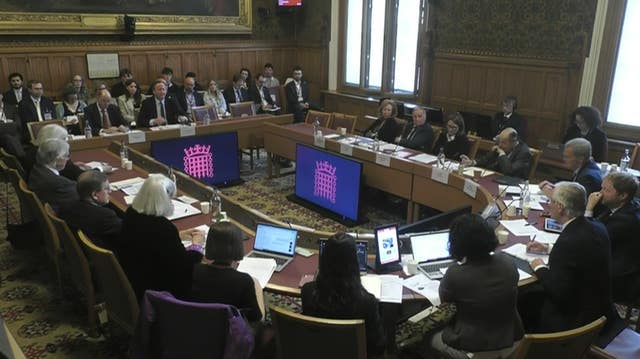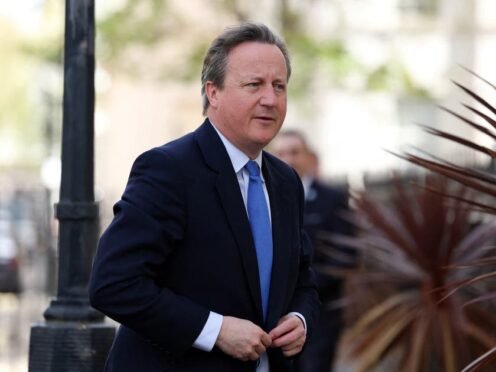Lord Cameron defended his legacy as prime minister when faced with suggestions the UK’s defence has been “hollowed out” during the Conservatives’ time in power.
As the Foreign Secretary took questions from peers, former chief of the defence staff Lord Houghton of Richmond asked the Cabinet minister whether he could have invested more in defence during his premiership.
Rishi Sunak has pledged to raise defence spending to 2.5% of gross domestic product (GDP) by 2030, amid growing concerns about the ambitions of the West’s rivals such as China and Russia.
MPs across the Commons, including Tory former defence ministers, have been urging the Government to invest more in defence in recent years.

As Lord Cameron took questions at the House of Lords International Relations and Defence Committee, crossbench peer Lord Houghton said: “Can I ask you to be a bit reflective of perhaps the last 15 years?
“You, as much as any UK politician, will know the degree to which over 15 years we have disinvested to an extent in defence, and in doing so we have hung on to the glossy stuff, the totemic symbols of international authority, but we have hollowed out our conventional resilience and, therefore, reduced our deterrent posture.”
The Foreign Secretary responded: “Can I interrupt you there? … Although we worked together very well in Government and I respect you, I completely disagree.”
Lord Cameron later added: “In 2010 the economy was in a very difficult situation, the forecast budget deficit at 11% of GDP. There is no defence and security without economic security, and we made the choice to deal with the deficit, get the economy growing, and the results of that were very successful.
“We made choices, the result of those choices and the result of then a well-funded defence budget always over 2% of GDP means that during those 14 years … we have therefore commissioned two aircraft carriers, the type 23s, the type 24s, the hunter-killer submarines.”
The Cabinet minister also rebuffed suggestions that bigger defence commitments by the UK and other European nations throughout the 2010s would have made a difference to Putin’s invasion of Ukraine.
“The argument that had we spent more on defence, Putin wouldn’t have played around in Ukraine in 2014 and invaded in 2022: not the case,” he said.
In a somewhat testy exchange, Lord Houghton responded: “I am surprised that you put such a low price on conventional deterrence when one of the main arguments…”
But Lord Cameron interrupted and argued back: “I put a huge price on conventional deterrence.
“Believe me, I am a huge fan of conventional deterrence, I absolutely believe it to my marrow, but the way deterrence needs to work, is you have to have both the deterrence and the alliance to deliver it, and that is what Nato and our commitment to Nato is all about.”
The Foreign Secretary also suggested Lord Houghton should celebrate the Prime Minister’s announcement on defence, telling the committee: “What he (Mr Sunak) has announced is going from 2% to 2.5%, which I think is hugely welcome and I am amazed given all the speeches you have given about it, you are not jumping up and down with excitement at 2.5%.”
